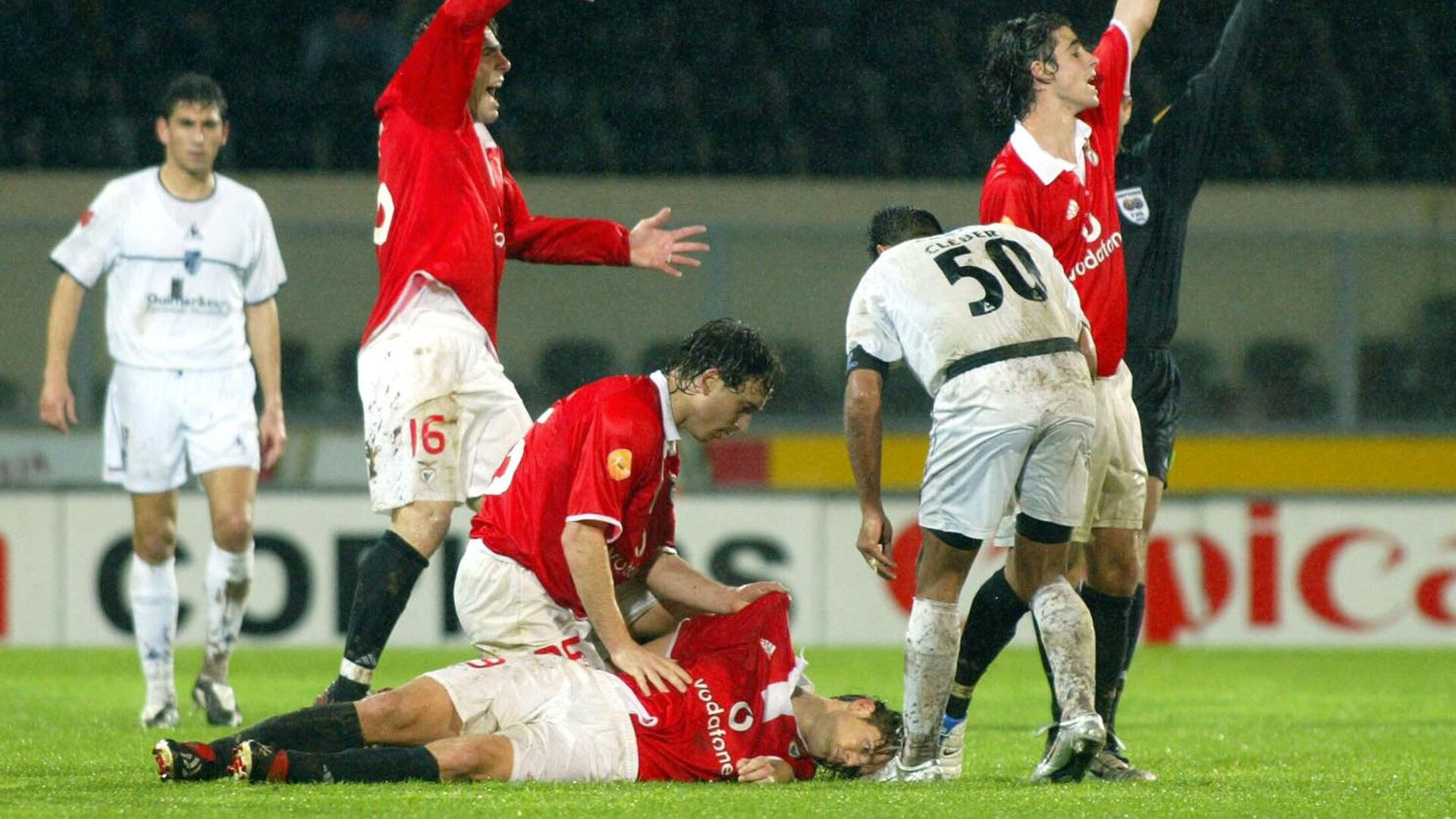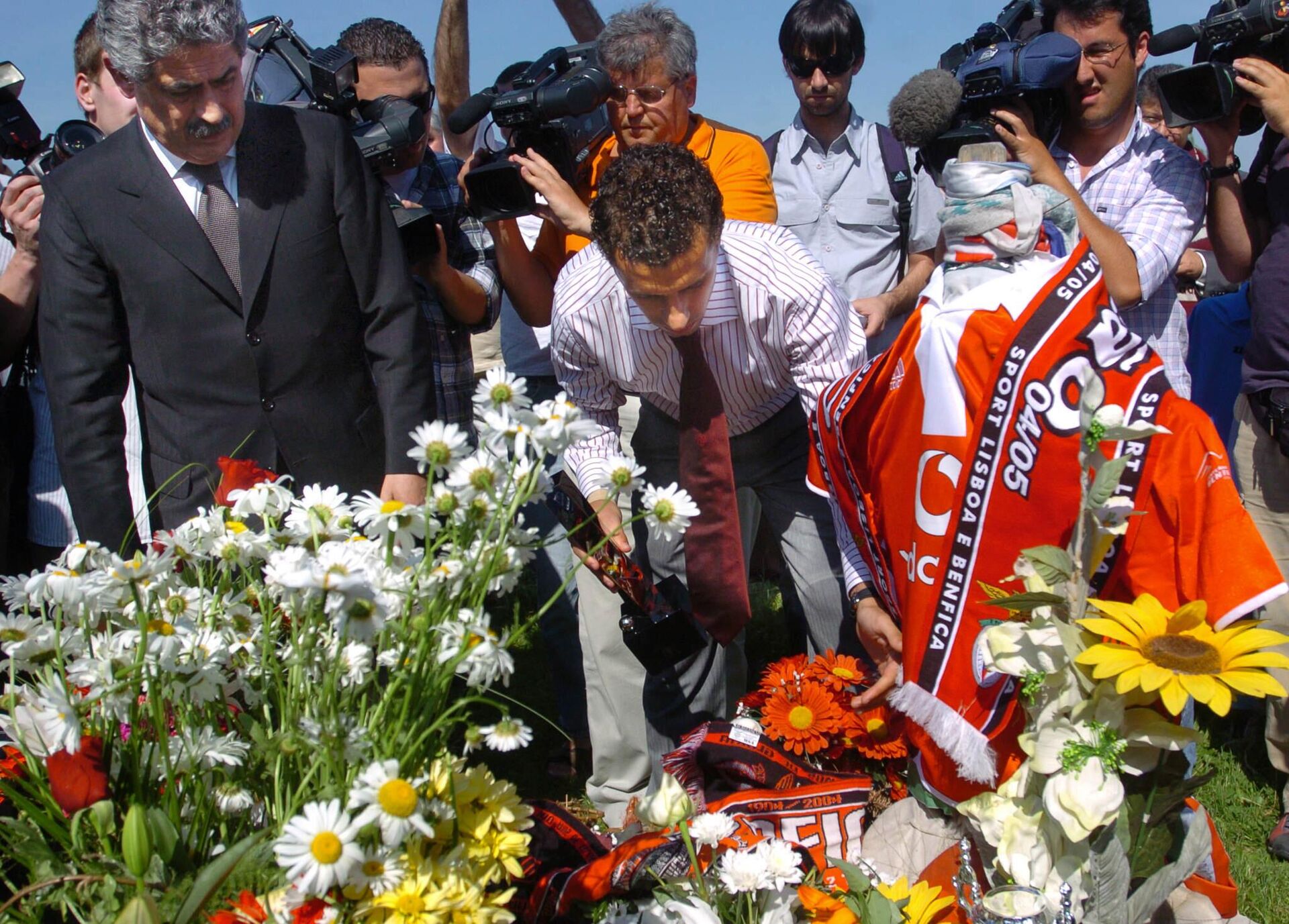
br>
Usual match of the Portuguese championship of the 2003/04 season. Ordinary interference for an opponent when throwing the ball out of touch. An unremarkable yellow card shown to the offender… And then a nightmare. One of the most terrible moments in the history of world sports, the video of which spread across the media and amazed millions of people.
Exactly 20 years ago, the heart of Hungarian football player Miklos Fehér stopped right on the football field.

br>How the “dragon” became the “eagle”
The forward's career is closely connected with Portugal. While playing for the Hungarian club Gyor, the guy was noticed by Porto scouts and in 1998 they signed a contract with the promising young man. It’s a pity that Feher never played for the “dragons”: it turned out to be beyond his strength to break into the first team, which was rushing towards victories in the Champions League and UEFA Cup. The best young player in Hungary — 1997 — had to go on loan: Salgueiros, Braga, 14 goals in 26 matches in the 2000/01 season. An excellent indicator. But the management of Porto was still not impressed with him — Fejer was sold to their main rival, Benfica. In the Eagles' camp, the Hungarian again became a rotation player.
It may seem that the football player did not have time to fully develop by the age of 24, but his treasury of awards and achievements was not empty. Gold in the Portuguese Championship and the country's Super Cup, seven goals in 25 matches for the Hungarian national team. And the Portuguese Cup, a medal for the victory in which the striker’s family received after death.
Died before the ambulance arrived
The tragedy occurred on January 25, 2004 during the away match between Benfica and Vitoria in the 19th round of the Portuguese Super League.
It's raining in Guimaraes, and the scoreboard at the Afonso Henriques stadium shows zeros. Feher might not have played at all in that ill-fated confrontation due to a cold. But he convinced the coaching staff that he was ready, came on as a substitute in the 59th minute and became one of the heroes of the meeting, giving an assist to Fernando Aguiar. “Benfica” took the lead, and already in the 90th minute (a minute after the goal was scored) Fejer received a yellow card for disrupting the attack, smiled and calmly went into defense. After taking a few steps, he bent over and fell on the wet lawn, arms outstretched. While the doctors were heading to the dying man, his teammates, who had not succumbed to emotions, tried to snatch the Hungarian from the clutches of death. Others clutched their heads in shock and, like team coach Jose Antonio Camacho, could not hold back tears from Miklos's lifelessly open eyes. All the horror took place during the live broadcast: thousands of fans followed the events and prayed for 24-year-old Feher.
Unfortunately, a miracle did not happen. In the ambulance and hospital, specialists “started” the forward’s heart twice, but the third time they were powerless. Two hours after Feher fell onto the lawn, doctors pronounced him dead, citing arrhythmia as the cause of the incident.
An autopsy was performed. It turned out that the root cause of the football player’s death was hypertrophic cardiomyopathy (HCM), a congenital heart pathology.
We will try to explain in more detail: a disease of the heart muscle in which there is massive thickening of one or more segments of the wall of the left (less often, right) ventricle. Arrhythmia, which is provoked by HCM, leads to sudden death — since the disease is asymptomatic for a long time, the patient may not be aware of it at all. And with constant physical activity the situation gets worse. It is important to note that this pathology is more common in men.

If the defibrillator had been on the athlete’s chest for three minutes, he might have been saved. However, doctors spent two minutes more to enter the field and begin providing assistance. This became a big scandal a few months before the start of Euro 2004 in Portugal and led to a revision of the medical examination procedure for athletes (Feher did not complain about his heart, the ECG did not show any abnormalities) and safety rules during sporting events.
< br>
Forever No. 29
Four days later, Feher was buried in his homeland. Before this, the coffin with the football player’s body was displayed at the home arena of “Da Luz” so that fans of the “eagles” and people far from the “number one sport”, who were no less shocked by the fans than the fans, could say goodbye to the Hungarian. The club assigned the 29th number to Miklos, and T-shirts with the name of the deceased player were quickly sold out by caring fans.
A monument to Feher was unveiled near the Da Luz stadium. The football player's gaze is directed upward, and his left hand rests on his heart.
























































Свежие комментарии